 Facebook
Facebook
 X
X
 Instagram
Instagram
 TikTok
TikTok
 Youtube
Youtube
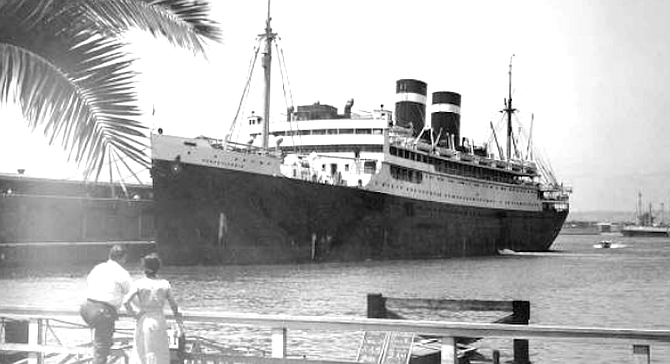
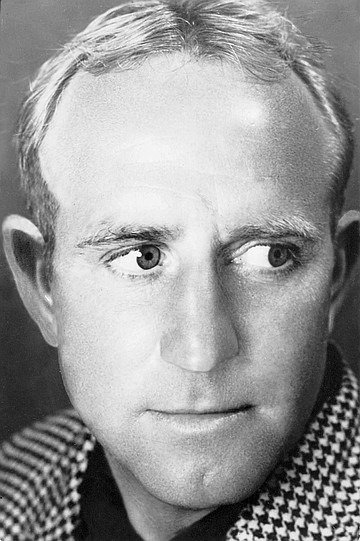
Early in the past century, Riverside, Washington, was a disreputable dockside community on a bluff above the Snohomish River. Max Carlton Miller, born in Traverse City, Michigan, spent his youth in Riverside, as some residents boast to this day.
His imagination and creativity surfaced early. In 1914, Miller, then a mere 15 years old, claimed to have spotted a sea serpent at the mouth of the river. A lad with such precocity was clearly college material, and he went on to attend the University of Washington. In his 20s, the adventure-loving young man traveled to the South Seas and to China.
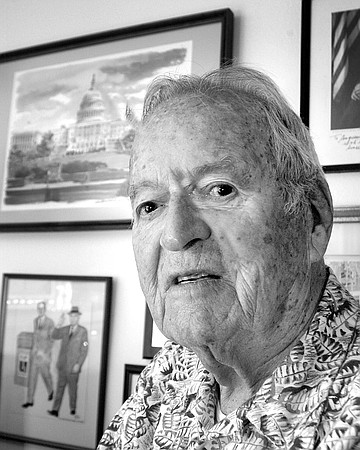
He landed a job with the San Diego Sun, a Scripps-Howard newspaper that struggled to compete with the Copley-owned Evening Tribune and San Diego Union. The Sun “was a crummy paper — a third paper with a third-paper mentality,” recalls noted journalist and former congressman Lionel Van Deerlin, who in 1937 took over Miller’s desk at the Sun.
The newspaper’s two-story office was at Seventh and B, across from what is now Symphony Towers. Van Deerlin would bring a sandwich each day, “and before noon, the mice would get to it,” he recalls.
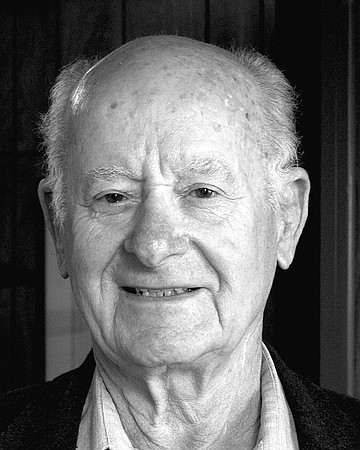
“It was dank down in the pressroom, but the editing and writing were done upstairs, and people seemed happy,” says Norman Roberts of La Jolla, who was then a high school intern assisting in the photography department.
It may have been a third-rate paper, but it was staffed by some who became giants of San Diego journalism. Dick Pourade, who later wrote several San Diego histories, was there. So was Eileen Jackson, who went on to become the city’s social arbiter for six decades. The majordomo was Magner White, who had won the city’s first Pulitzer Prize in 1924 for his vivid description of an eclipse of the sun. However, to beat a deadline, “the story was written in advance of the eclipse,” laughs Van Deerlin. (Today, that could lead to a disqualification, perhaps ex post facto.)
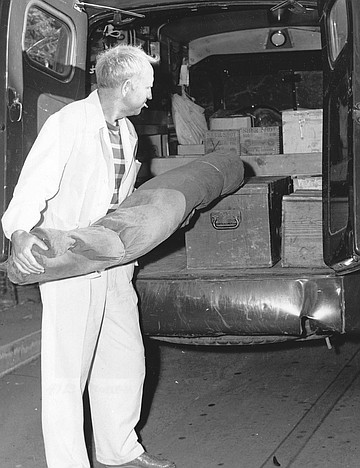
All three papers had reporters covering the San Diego waterfront, and Max Miller of the Sun was the best by far, agree old-timers who can remember San Diego in the Depression-wracked 1930s.
Thus, to San Diegans, it was no surprise that in 1932, Miller authored a book named I Cover the Waterfront.
What was surprising is that this earthy book immediately became a runaway best seller, garnering rave reviews from publications and/or critics known for their stuffiness.

Said the then-insufferably haughty and Eastern-centric New Yorker, “It’s a book you really ought to read.”
The old gray lady, the New York Times, dubbed the book “distinctive, original, unusual, fresh in tone and manner, with a quaint whimsicality of feeling and expression.”
Enthused Harry Carr of the Los Angeles Times, “This book has the touch of something dangerously like pure genius.”
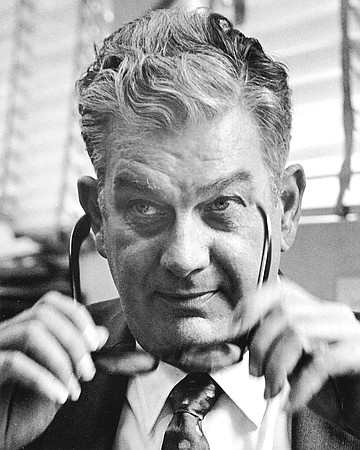
Wow. That was high praise for a book of vignettes about San Diego’s waterfront — an area of seedy saloons, brothels, hard-toiling fishermen, hard-drinking dock workers, hard-bitten con men, and hard-up sailors that the preachers wanted to sanitize and city fathers wanted to keep hidden.
As those who devour the Reader’s serialization of I Cover the Waterfront will quickly learn, the book is, indeed, a work of genius. Only Max Miller could have written so penetratingly and concisely of the demise of the henpecked Johnny Lafferty. Or of the gangly, publicity-loving Charles Lindbergh, before he gained world celebrity. Or of the hermit on the rattlesnake-infested Mexican island who, on rare trips to the mainland, headed straight for Mrs. Morgan’s Boarding House for Girls, which really wasn’t a boarding house, “but the police do not interfere other than to visit [Mrs. Morgan] in a social way,” Miller tells us. One of Mrs. Morgan’s — er, uh — boarders winds up with the hermit on the island, but I am not going to spoil your fun. Read it yourself.
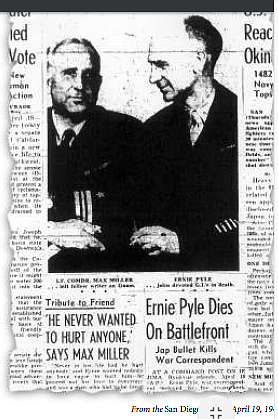
Miller seldom came to the office, recalls Roberts. “He had an office at the waterfront, where he hung out.” It was upstairs in the tugboat office, in a room belonging to a publicity agent. Today, such coziness with publicists would be ethically forbidden.
But like all Sun reporters, Miller had to come to the office for a weekly staff meeting, and his biting account of it will hit home with every journalist and most workers in corporations — but again, you have to read it yourself.
The book — and particularly its title — inspired other artists. There was a movie by the name starring Claudette Colbert. The flick bore almost no resemblance to the book, other than that a bordello was called a boarding house and the male star was a cynical, hard-drinking waterfront reporter. (More on that below.) The film originated the phrase “Not tonight, Josephine!” After it came out, Variety promptly labeled it a studio job that was unrelated to the book.

In 1933 came a wonderful song, “I Cover the Waterfront,” by Johnny Green and Edward Heyman. It was an instant hit — so electrifying that the producers of the movie reportedly dubbed its music into what may have been a remake. It has been said that the movie originally had another name but picked up the Waterfront moniker after the song took off. (That rumor has been challenged.) The song has since become a staple of the jazz repertoire, performed by such stars as Billie Holiday, Frank Sinatra, Artie Shaw, Charlie Parker, and Cannonball Adderley.
Miller “was eternally bitter because he didn’t make any money out of the movie version,” says Al JaCoby, who had several topside editor titles at the Union over many years. “I think what happened is that he sold the rights to the book to someone who then sold it to the movie producers.” Unfortunately, from a financial perspective, that’s show biz. That’s Hollywood. ’Twas ever thus.
What was Max Miller like? He was about five ten, stocky, with short hair, with a decidedly ruddy complexion and a cigarette dangling from his lips or in his fingers.
Why the ruddy complexion? “He was a drunk. Just like me,” said the self-effacing Joe Stone, a wit known for exaggerating his own perceived flaws. Stone wrote Miller’s obituary for the Union, wrote a Milleresque column for the Borrego Sun, and, until he died in late November at age 90, believed he might have been able to match Miller snort for snort.
Miller “was a lush,” says Van Deerlin.
Union-Tribune columnist Neil Morgan, a lifelong friend and onetime competitor of Miller’s, puts it more gently: “It was rare that I ever went to that beautiful house on the cliffs without having some whiskey.”
Morgan was in college when he first read I Cover the Waterfront. Almost immediately after publication, Miller had become a cult figure on college campuses. While he was in the Navy in San Diego, Morgan read that Miller had lost the rubber raft with which he had gone snorkeling off the coast of that La Jolla oceanfront house he had purchased after the book had become a smash and he had quit the Sun.
Morgan commandeered a surplus raft and went to the posh home and presented the replacement raft. Miller was thrilled. And treated Morgan to a drink of low-grade bourbon, which was just about all that was available in those days. (According to Roberts, it was probably Waterfill & Frazier, produced by a Kentucky distiller that had moved to Juárez in 1927, during Prohibition. It was widely, if dyspeptically, consumed in San Diego in those days.)
After his initial success, Miller published a book every year up to the Korean War, some 28 in all. Some were on San Diego, such as a book on La Jolla, The Town with the Funny Name. He returned to the waterfront theme. He wrote extensively on Baja California. He wrote military books and some corporate vanity tomes that brought him some money. “His books were lovely, beautifully crafted essays, contemplative pieces, very soft in terms of outlook and view — they just didn’t have the zing of that first one,” says Morgan.
Miller also returned to his beloved prostitution theme. He teamed up with Fred Mazzulla, a Denver lawyer with a fascination for the history of 19th-century bordellos and a coauthor of the authoritative Brass Checks and Red Lights: Being a Pictorial Potpourri of Historical Prostitutes, Parlor Houses, Professors, Procuresses and Pimps.
After much correspondence on the topic of hookers and whorehouses, Mazzulla and Miller in the early 1960s coauthored Holladay Street, a history of 19th-century Denver prostitution. One section of that book engenders debate among Colorado historians to this day.
The book reported that on August 25, 1877, history’s only duel between two Colorado females took place. Mattie Silks and Katie Fulton were rival bordello madams. After a drinking bout, they decided to settle their dispute in a duel, according to the Miller/Mazzulla account. Each lady’s boyfriend served as a second. Katie allegedly missed Mattie but hit Mattie’s lover, who was standing beside her. It was only a flesh wound. Katie beat it out of town, but Mattie’s boyfriend survived and eventually married her. A musical, Mattie Got Her Gun, celebrates the alleged incident.
But other historians pooh-pooh the whole story, claiming that an earlier author had either invented the tale of the duel or had misinterpreted newspaper accounts of the ladies’ disagreement. In any case, documents at UCSD’s Mandeville Special Collections Library, where Miller’s extensive papers repose, indicate that Miller and Mazzulla meticulously researched every twist and turn, every bump and grind they reported upon.
In one letter, Mazzulla told Miller of an interview he had had with a long-retired lady of the evening. Mazzulla had asked her definitional questions, such as what “hustling” was all about. The former sportin’ lady told Mazzulla, “All girls hustle or hustled such as hotels, cribs, working windows, streets, street walkers, chippies and even call girls — in other words, all sporting girls hustle.”
But that book, too, garnered only a modest audience, despite its titillating subject.
Miller, however, remained a toast of San Diego society. “People whom you would describe as name-droppers would be the ones to mention Max Miller,” says Van Deerlin. “Max Miller was everybody’s darling.”
He and his wife entertained the Beautiful People, particularly since social columnist Eileen Jackson was such a close friend. All played croquet on the lawn that sloped down to the ocean. But Miller sometimes dropped out in midgame. “We would go there. He would be barbecuing chicken. He would go in the house for 30 or 40 minutes or an hour, and he would slide out of his chair because of his drinking,” says JaCoby.
One of Miller’s drinking buddies was the famed columnist Ernie Pyle, also a Scripps-Howard writer. Before becoming a household word for his World War II columns, Pyle, along with his wife, traveled the U.S. writing columns and when in San Diego visited Sun staffers, particularly Miller. “Max knew Ernie for many years,” says JaCoby. “Max had quite a good library of books and had several Pyle books, all very affectionately inscribed — ‘Max, here is my latest, just wish it was as good as yours.’ ”
Miller was a naval officer in World War II. Friends say he squired Pyle around. There is a yarn that Pyle wanted to go to a small island in the Pacific. But Miller begged off that day; he had a hideous hangover. Pyle went to the island and was killed. Others suggest, however, that the story may be apocryphal. (People may be shocked to learn that on occasion, a few journalists — dedicated to truth as they may be — relate stories that stray somewhat from verisimilitude. Miller, it is said, sometimes fell into that category, especially when he was under the influence of the firewater that people erroneously call “truth serum.”)
But there was one activity in which Miller never strayed from his announced intentions. In the annual La Jolla Rough Water Swim, Miller always made sure he finished last, said Stone, and local media would regularly point that out.
And Miller was the expert whom the media consulted on San Diego and environs matters. Van Deerlin remembers a time when there was a raid on a Rosarito Beach hotel, and Americans were locked up for a week. Mexican relations became strained. A local radio station sent a reporter to interview Miller about the neighbors to the south. The reporter knew Miller’s fondness for the sauce. “It’s the funniest take,” says Van Deerlin. “It starts out as a serious interview. As the reporter plied him with booze, it got absolutely squashy. He [Miller] couldn’t get out a straight word.”
Following World War II, there was suddenly a strange presence in San Diego: a Democratic newspaper. After the Copley newspapers purchased the Sun at the time of its demise in the late ’30s, the Tribune and Union had had the market to themselves. But following the war, Clinton D. McKinnon launched the Journal, a Democratic paper. It featured a young columnist who was, very successfully, trying to write a Herb Caen–type column about San Diego.
He was Neil Morgan. To counter him, the Tribune brought back Max Miller as a regular columnist. Morgan and Miller could not have been more different. Morgan portrayed a postwar community beginning to experience big-city life. Miller wanted to keep San Diego small. He railed against tourism and tract homes.
Subdivision developers “seem to travel like a circus, except that a circus never leaves its tents behind each time,” he wrote, bemoaning once-quiet hills that become lined with ticky-tack homes.
“Come one and all, oh ye aged from Ohio and Iowa, come one and all and live free off the taxes in California,” Miller griped.
El Cajon, then as now, sponsored community events whose attendance figures were invariably exaggerated by the press. “Its parades and pageants have become — week by week — parade-ier and pageant-ier,” harrumphed Miller.
He wrote a book on what he perceived as the California in-migration problem, And Bring All Your Folks, which hypothesized that with all the outsiders streaming in, Californians would be forced to move to islands off the coast. Then, in his unique prose, he explored those islands.
He complained that before the people had poured in, “San Diego harbor itself used to be a breeding water for whales — and by the hundreds.”
In retrospect, Miller was prematurely prescient about San Diego. Also, then as now, pro-environment and anti-developer views were taboo within the Copley organization.
In the columnizing contest of the time, Morgan was resonating with the public and Miller was not. So Copley bought the Journal too — mainly, it was said, to get Morgan. At the time, the Copley papers were headed by Bill Shea, who, by all reports, could match Miller swig for swig. They arranged a meeting, and Miller’s departure was handled with aplomb — plum brandy, perhaps.
For a while, Miller was book editor of the Union, says JaCoby. It didn’t last. As Sunday editor, JaCoby gave some writing assignments to Miller. “He wrote me a piece that was just awful,” recalls JaCoby. “Even so, this was Max Miller. I did a heavy job of editing and turned it into a good piece. I sent it out to him, said I had made changes, and asked him to look it over. It came back immediately. He said it was fine.”
Later, Shea’s assistant came to JaCoby and suggested that the Millers were short on funds. “He said I should pay Max double what I normally paid. He asked me what I usually paid. I said $1000 — five times what I normally paid,” recalls JaCoby.
“Double it,” ordered Shea’s assistant. La Jolla’s Beautiful People took care of each other then, as they do now.
That was in the 1960s. Max Miller, who died in 1967, had peaked in 1932 with I Cover the Waterfront. Like opera composers Mascagni, Leoncavallo, and Humperdinck (Cavalleria Rusticana, Pagliacci, and Hänsel und Gretel, respectively) and French impressionist Caillebotte (Paris Street; Rainy Day), Miller could come up with only one masterpiece in his lifetime. Indeed, he seemed to have foretold it in the last paragraph of I Cover the Waterfront, when he wrote, “I have written as much of a book as I can write.”
What happened? “It was like seeing someone going downhill,” says Van Deerlin. “He never matched the brilliance of the first book.”
But Morgan has a different interpretation. “I Cover the Waterfront was widely said among publishers to have been rewritten by a very beautiful literary agent in New York who was in love with Max at the time,” says Morgan. “It was a nasty allegation, but it was a better book than any he wrote subsequently. I tend to believe the rumor of the publishing trade.”



Early in the past century, Riverside, Washington, was a disreputable dockside community on a bluff above the Snohomish River. Max Carlton Miller, born in Traverse City, Michigan, spent his youth in Riverside, as some residents boast to this day.
His imagination and creativity surfaced early. In 1914, Miller, then a mere 15 years old, claimed to have spotted a sea serpent at the mouth of the river. A lad with such precocity was clearly college material, and he went on to attend the University of Washington. In his 20s, the adventure-loving young man traveled to the South Seas and to China.

He landed a job with the San Diego Sun, a Scripps-Howard newspaper that struggled to compete with the Copley-owned Evening Tribune and San Diego Union. The Sun “was a crummy paper — a third paper with a third-paper mentality,” recalls noted journalist and former congressman Lionel Van Deerlin, who in 1937 took over Miller’s desk at the Sun.
The newspaper’s two-story office was at Seventh and B, across from what is now Symphony Towers. Van Deerlin would bring a sandwich each day, “and before noon, the mice would get to it,” he recalls.

“It was dank down in the pressroom, but the editing and writing were done upstairs, and people seemed happy,” says Norman Roberts of La Jolla, who was then a high school intern assisting in the photography department.
It may have been a third-rate paper, but it was staffed by some who became giants of San Diego journalism. Dick Pourade, who later wrote several San Diego histories, was there. So was Eileen Jackson, who went on to become the city’s social arbiter for six decades. The majordomo was Magner White, who had won the city’s first Pulitzer Prize in 1924 for his vivid description of an eclipse of the sun. However, to beat a deadline, “the story was written in advance of the eclipse,” laughs Van Deerlin. (Today, that could lead to a disqualification, perhaps ex post facto.)

All three papers had reporters covering the San Diego waterfront, and Max Miller of the Sun was the best by far, agree old-timers who can remember San Diego in the Depression-wracked 1930s.
Thus, to San Diegans, it was no surprise that in 1932, Miller authored a book named I Cover the Waterfront.
What was surprising is that this earthy book immediately became a runaway best seller, garnering rave reviews from publications and/or critics known for their stuffiness.

Said the then-insufferably haughty and Eastern-centric New Yorker, “It’s a book you really ought to read.”
The old gray lady, the New York Times, dubbed the book “distinctive, original, unusual, fresh in tone and manner, with a quaint whimsicality of feeling and expression.”
Enthused Harry Carr of the Los Angeles Times, “This book has the touch of something dangerously like pure genius.”

Wow. That was high praise for a book of vignettes about San Diego’s waterfront — an area of seedy saloons, brothels, hard-toiling fishermen, hard-drinking dock workers, hard-bitten con men, and hard-up sailors that the preachers wanted to sanitize and city fathers wanted to keep hidden.
As those who devour the Reader’s serialization of I Cover the Waterfront will quickly learn, the book is, indeed, a work of genius. Only Max Miller could have written so penetratingly and concisely of the demise of the henpecked Johnny Lafferty. Or of the gangly, publicity-loving Charles Lindbergh, before he gained world celebrity. Or of the hermit on the rattlesnake-infested Mexican island who, on rare trips to the mainland, headed straight for Mrs. Morgan’s Boarding House for Girls, which really wasn’t a boarding house, “but the police do not interfere other than to visit [Mrs. Morgan] in a social way,” Miller tells us. One of Mrs. Morgan’s — er, uh — boarders winds up with the hermit on the island, but I am not going to spoil your fun. Read it yourself.

Miller seldom came to the office, recalls Roberts. “He had an office at the waterfront, where he hung out.” It was upstairs in the tugboat office, in a room belonging to a publicity agent. Today, such coziness with publicists would be ethically forbidden.
But like all Sun reporters, Miller had to come to the office for a weekly staff meeting, and his biting account of it will hit home with every journalist and most workers in corporations — but again, you have to read it yourself.
The book — and particularly its title — inspired other artists. There was a movie by the name starring Claudette Colbert. The flick bore almost no resemblance to the book, other than that a bordello was called a boarding house and the male star was a cynical, hard-drinking waterfront reporter. (More on that below.) The film originated the phrase “Not tonight, Josephine!” After it came out, Variety promptly labeled it a studio job that was unrelated to the book.

In 1933 came a wonderful song, “I Cover the Waterfront,” by Johnny Green and Edward Heyman. It was an instant hit — so electrifying that the producers of the movie reportedly dubbed its music into what may have been a remake. It has been said that the movie originally had another name but picked up the Waterfront moniker after the song took off. (That rumor has been challenged.) The song has since become a staple of the jazz repertoire, performed by such stars as Billie Holiday, Frank Sinatra, Artie Shaw, Charlie Parker, and Cannonball Adderley.
Miller “was eternally bitter because he didn’t make any money out of the movie version,” says Al JaCoby, who had several topside editor titles at the Union over many years. “I think what happened is that he sold the rights to the book to someone who then sold it to the movie producers.” Unfortunately, from a financial perspective, that’s show biz. That’s Hollywood. ’Twas ever thus.
What was Max Miller like? He was about five ten, stocky, with short hair, with a decidedly ruddy complexion and a cigarette dangling from his lips or in his fingers.
Why the ruddy complexion? “He was a drunk. Just like me,” said the self-effacing Joe Stone, a wit known for exaggerating his own perceived flaws. Stone wrote Miller’s obituary for the Union, wrote a Milleresque column for the Borrego Sun, and, until he died in late November at age 90, believed he might have been able to match Miller snort for snort.
Miller “was a lush,” says Van Deerlin.
Union-Tribune columnist Neil Morgan, a lifelong friend and onetime competitor of Miller’s, puts it more gently: “It was rare that I ever went to that beautiful house on the cliffs without having some whiskey.”
Morgan was in college when he first read I Cover the Waterfront. Almost immediately after publication, Miller had become a cult figure on college campuses. While he was in the Navy in San Diego, Morgan read that Miller had lost the rubber raft with which he had gone snorkeling off the coast of that La Jolla oceanfront house he had purchased after the book had become a smash and he had quit the Sun.
Morgan commandeered a surplus raft and went to the posh home and presented the replacement raft. Miller was thrilled. And treated Morgan to a drink of low-grade bourbon, which was just about all that was available in those days. (According to Roberts, it was probably Waterfill & Frazier, produced by a Kentucky distiller that had moved to Juárez in 1927, during Prohibition. It was widely, if dyspeptically, consumed in San Diego in those days.)
After his initial success, Miller published a book every year up to the Korean War, some 28 in all. Some were on San Diego, such as a book on La Jolla, The Town with the Funny Name. He returned to the waterfront theme. He wrote extensively on Baja California. He wrote military books and some corporate vanity tomes that brought him some money. “His books were lovely, beautifully crafted essays, contemplative pieces, very soft in terms of outlook and view — they just didn’t have the zing of that first one,” says Morgan.
Miller also returned to his beloved prostitution theme. He teamed up with Fred Mazzulla, a Denver lawyer with a fascination for the history of 19th-century bordellos and a coauthor of the authoritative Brass Checks and Red Lights: Being a Pictorial Potpourri of Historical Prostitutes, Parlor Houses, Professors, Procuresses and Pimps.
After much correspondence on the topic of hookers and whorehouses, Mazzulla and Miller in the early 1960s coauthored Holladay Street, a history of 19th-century Denver prostitution. One section of that book engenders debate among Colorado historians to this day.
The book reported that on August 25, 1877, history’s only duel between two Colorado females took place. Mattie Silks and Katie Fulton were rival bordello madams. After a drinking bout, they decided to settle their dispute in a duel, according to the Miller/Mazzulla account. Each lady’s boyfriend served as a second. Katie allegedly missed Mattie but hit Mattie’s lover, who was standing beside her. It was only a flesh wound. Katie beat it out of town, but Mattie’s boyfriend survived and eventually married her. A musical, Mattie Got Her Gun, celebrates the alleged incident.
But other historians pooh-pooh the whole story, claiming that an earlier author had either invented the tale of the duel or had misinterpreted newspaper accounts of the ladies’ disagreement. In any case, documents at UCSD’s Mandeville Special Collections Library, where Miller’s extensive papers repose, indicate that Miller and Mazzulla meticulously researched every twist and turn, every bump and grind they reported upon.
In one letter, Mazzulla told Miller of an interview he had had with a long-retired lady of the evening. Mazzulla had asked her definitional questions, such as what “hustling” was all about. The former sportin’ lady told Mazzulla, “All girls hustle or hustled such as hotels, cribs, working windows, streets, street walkers, chippies and even call girls — in other words, all sporting girls hustle.”
But that book, too, garnered only a modest audience, despite its titillating subject.
Miller, however, remained a toast of San Diego society. “People whom you would describe as name-droppers would be the ones to mention Max Miller,” says Van Deerlin. “Max Miller was everybody’s darling.”
He and his wife entertained the Beautiful People, particularly since social columnist Eileen Jackson was such a close friend. All played croquet on the lawn that sloped down to the ocean. But Miller sometimes dropped out in midgame. “We would go there. He would be barbecuing chicken. He would go in the house for 30 or 40 minutes or an hour, and he would slide out of his chair because of his drinking,” says JaCoby.
One of Miller’s drinking buddies was the famed columnist Ernie Pyle, also a Scripps-Howard writer. Before becoming a household word for his World War II columns, Pyle, along with his wife, traveled the U.S. writing columns and when in San Diego visited Sun staffers, particularly Miller. “Max knew Ernie for many years,” says JaCoby. “Max had quite a good library of books and had several Pyle books, all very affectionately inscribed — ‘Max, here is my latest, just wish it was as good as yours.’ ”
Miller was a naval officer in World War II. Friends say he squired Pyle around. There is a yarn that Pyle wanted to go to a small island in the Pacific. But Miller begged off that day; he had a hideous hangover. Pyle went to the island and was killed. Others suggest, however, that the story may be apocryphal. (People may be shocked to learn that on occasion, a few journalists — dedicated to truth as they may be — relate stories that stray somewhat from verisimilitude. Miller, it is said, sometimes fell into that category, especially when he was under the influence of the firewater that people erroneously call “truth serum.”)
But there was one activity in which Miller never strayed from his announced intentions. In the annual La Jolla Rough Water Swim, Miller always made sure he finished last, said Stone, and local media would regularly point that out.
And Miller was the expert whom the media consulted on San Diego and environs matters. Van Deerlin remembers a time when there was a raid on a Rosarito Beach hotel, and Americans were locked up for a week. Mexican relations became strained. A local radio station sent a reporter to interview Miller about the neighbors to the south. The reporter knew Miller’s fondness for the sauce. “It’s the funniest take,” says Van Deerlin. “It starts out as a serious interview. As the reporter plied him with booze, it got absolutely squashy. He [Miller] couldn’t get out a straight word.”
Following World War II, there was suddenly a strange presence in San Diego: a Democratic newspaper. After the Copley newspapers purchased the Sun at the time of its demise in the late ’30s, the Tribune and Union had had the market to themselves. But following the war, Clinton D. McKinnon launched the Journal, a Democratic paper. It featured a young columnist who was, very successfully, trying to write a Herb Caen–type column about San Diego.
He was Neil Morgan. To counter him, the Tribune brought back Max Miller as a regular columnist. Morgan and Miller could not have been more different. Morgan portrayed a postwar community beginning to experience big-city life. Miller wanted to keep San Diego small. He railed against tourism and tract homes.
Subdivision developers “seem to travel like a circus, except that a circus never leaves its tents behind each time,” he wrote, bemoaning once-quiet hills that become lined with ticky-tack homes.
“Come one and all, oh ye aged from Ohio and Iowa, come one and all and live free off the taxes in California,” Miller griped.
El Cajon, then as now, sponsored community events whose attendance figures were invariably exaggerated by the press. “Its parades and pageants have become — week by week — parade-ier and pageant-ier,” harrumphed Miller.
He wrote a book on what he perceived as the California in-migration problem, And Bring All Your Folks, which hypothesized that with all the outsiders streaming in, Californians would be forced to move to islands off the coast. Then, in his unique prose, he explored those islands.
He complained that before the people had poured in, “San Diego harbor itself used to be a breeding water for whales — and by the hundreds.”
In retrospect, Miller was prematurely prescient about San Diego. Also, then as now, pro-environment and anti-developer views were taboo within the Copley organization.
In the columnizing contest of the time, Morgan was resonating with the public and Miller was not. So Copley bought the Journal too — mainly, it was said, to get Morgan. At the time, the Copley papers were headed by Bill Shea, who, by all reports, could match Miller swig for swig. They arranged a meeting, and Miller’s departure was handled with aplomb — plum brandy, perhaps.
For a while, Miller was book editor of the Union, says JaCoby. It didn’t last. As Sunday editor, JaCoby gave some writing assignments to Miller. “He wrote me a piece that was just awful,” recalls JaCoby. “Even so, this was Max Miller. I did a heavy job of editing and turned it into a good piece. I sent it out to him, said I had made changes, and asked him to look it over. It came back immediately. He said it was fine.”
Later, Shea’s assistant came to JaCoby and suggested that the Millers were short on funds. “He said I should pay Max double what I normally paid. He asked me what I usually paid. I said $1000 — five times what I normally paid,” recalls JaCoby.
“Double it,” ordered Shea’s assistant. La Jolla’s Beautiful People took care of each other then, as they do now.
That was in the 1960s. Max Miller, who died in 1967, had peaked in 1932 with I Cover the Waterfront. Like opera composers Mascagni, Leoncavallo, and Humperdinck (Cavalleria Rusticana, Pagliacci, and Hänsel und Gretel, respectively) and French impressionist Caillebotte (Paris Street; Rainy Day), Miller could come up with only one masterpiece in his lifetime. Indeed, he seemed to have foretold it in the last paragraph of I Cover the Waterfront, when he wrote, “I have written as much of a book as I can write.”
What happened? “It was like seeing someone going downhill,” says Van Deerlin. “He never matched the brilliance of the first book.”
But Morgan has a different interpretation. “I Cover the Waterfront was widely said among publishers to have been rewritten by a very beautiful literary agent in New York who was in love with Max at the time,” says Morgan. “It was a nasty allegation, but it was a better book than any he wrote subsequently. I tend to believe the rumor of the publishing trade.”
Comments